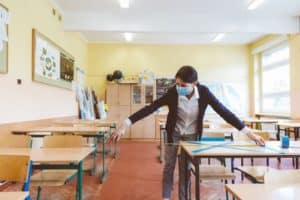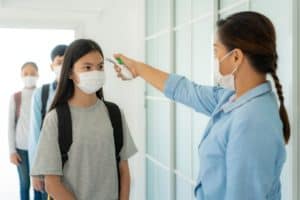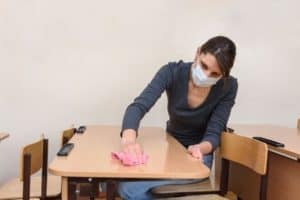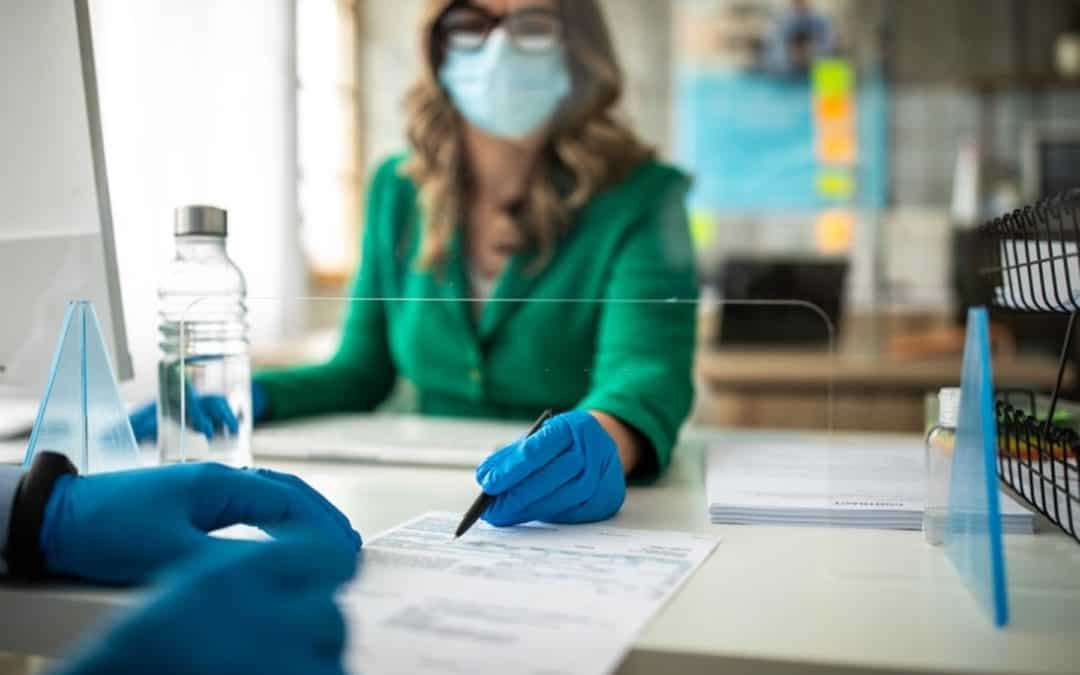As governments across the globe consider reopening their schools as lockdowns are eased, they all agree that drastic measures must be taken for the protection of students and teachers.
Interestingly, governments have tried various systems to ensure a safer return of scholars and university students to their learning institutions. Some have staggered classes with phased re-openings, others have staggered learning hours, the placement of sneeze guards has been adopted by many, and all schools are maintaining strict social distancing protocols.

Across the globe, all health authorities agree that no matter how schools are reopened, safety protocols will have to be laid down and adhered so that students and their educators are protected.
In the U.S., it is most likely that the schools will be reopening in the fall. In countries that have already begun phasing in the return to the classrooms, some of the following measures have been implemented:

Measure space to ensure social distancing inside the classrooms
Countries like Denmark and Sweden started to ease lockdown measures from mid-April. They have adhered to social distancing rules to keep students and teachers safe. These include smaller classes, parents dropping their children off from a distance, and desks have been placed 6.5 feet apart.
Many parents in Denmark have decided not to send their children back for now because they fear a resurgence of the virus. Many schools decided to keep their buildings closed, and attending students are taught outside. Teachers are using fun teaching methods like writing on the playground with chalk, instead of using blackboards.
Acrylic sneeze guards for every student’s desk
Some elite schools, especially those with bigger budgets, have decided that sneeze guards offer excellent protection for their students and teaching staff. Sneeze guards are strategically placed on all three sides of a desk, protecting students sitting beside each other. They also protect students sitting behind and in front of others from any droplets coming from a sneeze or cough. Many schools, especially in the Netherlands, have adopted polycarbonate protection successfully.
Even though social distancing has become the norm, there are many situations within schools where students must sit beside each other when they work or eat. Libraries, computer labs, science labs, and cafeterias are areas where sneeze guards are the best solution to protect everyone. In Shanghai, school cafeterias are kept spotlessly clean, and glass divides have been placed to protect students that usually eat together in groups of two.

Every person must wear a face mask: No need to be shy, it is essential!
Children and adults in eastern cultures are used to wearing masks when they are sick. This is done as a sign of respect toward others. In Western cultures, people tend to be shy when they wear a mask, but masks have proven to be one of the most essential barriers for protection against viruses, and COVID-19 is no exception.

Hand sanitizer for every person entering a classroom
In Canada, schools reopened in mid-May, and one of their means of protection is the use of visors and hand sanitizers at all entrances of schools and classrooms. Directives from the World Health Organization (WHO) and other public health organizations are that frequent hand washing and the frequent use of health sanitizers are both equally effective in preventing the spread of the coronavirus.

Use of infrared thermometers for self-testing
Infrared thermometers are used by many schools to scan student temperatures. This has been adopted by schools in Cyprus, and students are tested by health workers in protective clothing as they enter their school grounds.
In Shanghai, students were thrilled to return to school, after a 3-month absence, in the second week of May. Thermal scanners are used at their schools to screen them. Schools there have also gone out full force to outline all the protocols of preventing the spread of the virus with informative posters.

Cleaning protocols for school and college canteens need to be followed properly
Cleaning protocols in canteens are vital to preventing the spread of the virus. Disinfectant cleaners need to be used on floors, kitchen appliances, and all food preparation areas. The tables and chairs where students eat their meals need to be wiped down properly after every sitting.
Disinfectants are often strong, and cleaning staff must adhere to the hazard warnings and directions as indicated on the products. Also, the mixing of cleaners and disinfectants can cause certain chemical reactions that can lead to injuries. Products that contain chlorine bleach and ammonia should never be mixed.
The lockdowns in countries around the world have had an immense effect on children, having missed the social contact with their classmates. Parents juggling working from home while also helping with school work have also felt the pressure. Furthermore, the safety of children and their teachers is imperative, and all the measures that are being implemented around the globe are important to everyone’s wellbeing.

Recent Comments